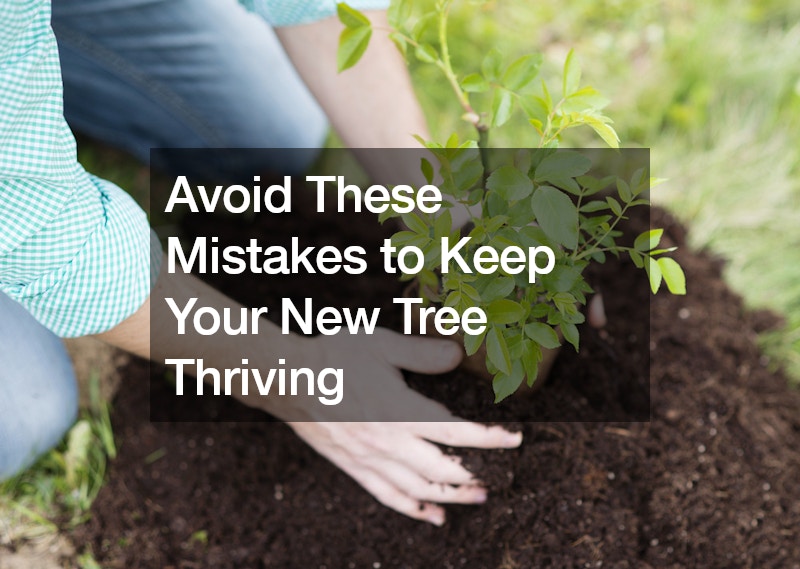Trees are a majestic addition to any landscape. They provide shade, beauty, and even improve air quality. But for a young tree to flourish and reach its full potential, proper planting and care are crucial. Many well-meaning homeowners make mistakes during the planting process that can stunt growth or even lead to the tree’s demise.
This article outlines five common missteps to avoid when planting a new tree, ensuring it thrives for years to come.
1. Wrong Place, Wrong Tree
The first, and arguably most critical, step is choosing the right tree for the right location. Consider the mature size of the tree and ensure it has enough space to grow comfortably without crowding structures or power lines.
Sunlight is another crucial factor. Research the specific light needs of your chosen tree variety. Some trees thrive in full sun, while others prefer partial shade. Planting a sun-loving tree in a shady area, or vice versa, will ultimately stress the tree and hinder its growth.
Consulting a reputable nursery or local tree care service can be invaluable in selecting the perfect tree for your specific landscape. These professionals can assess your sunlight conditions, soil type, and desired mature size to recommend suitable options.
2. Planting at the Wrong Depth
Planting a tree too deep is a common mistake that can have serious consequences. When planting, aim to position the root flare (the area where the trunk widens at the base) at or slightly above the surrounding soil level. Burying the root flare can suffocate the roots and prevent them from accessing the oxygen and nutrients they need to thrive.
Conversely, planting too shallow can leave the roots exposed to the elements and susceptible to drying out or damage from lawnmowers or weed whackers. When digging the planting hole, aim for a depth that is roughly two to three times wider than the root ball of the tree.
3. Confined Roots, Limited Growth
Container-grown trees often have roots that circle around the root ball within the pot. Leaving these circling roots undisturbed can restrict the tree’s ability to establish a healthy root system in the ground. Before planting, gently tease out the circling roots with your fingers or use a tool to carefully loosen them. This encourages the roots to spread outward and explore the surrounding soil for water and nutrients.
4. Watering Wisely
Newly planted trees require consistent watering, especially during the first year. However, overwatering can be just as detrimental as underwatering. The key is to find a balance.
A good rule of thumb is to water the tree deeply and infrequently, allowing the soil to dry slightly between waterings. A simple finger test can help determine moisture levels. Stick your finger a few inches into the soil. If it feels dry to the touch, it’s time to water.
Soaker hoses or drip irrigation systems are excellent options for delivering deep watering directly to the root zone, minimizing water waste.
5. Mulch Matters
Applying a layer of mulch around the base of your new tree is highly beneficial. Mulch helps retain moisture in the soil, reducing the need for frequent watering. It also helps suppress weeds that compete with the tree for water and nutrients.
When applying mulch, create a donut-shaped ring around the base of the tree, keeping the mulch a few inches away from the trunk. This allows for proper air circulation around the root flare. Use a two- to three-inch layer of organic mulch, such as shredded bark or wood chips.
Beyond Planting: Ongoing Tree Care
While proper planting sets the stage for success, ongoing care is essential for a healthy and thriving tree. Here are some additional tips:
- Pruning: Young trees may require some formative pruning to remove dead, diseased, or crossing branches. However, extensive pruning is generally not necessary for healthy young trees. Consult a tree care service if you are unsure about proper pruning techniques.
- Monitor for Pests and Diseases: Keep an eye out for signs of insect damage or disease. Early detection and treatment can prevent serious problems. A tree care service can help diagnose and address any pest or disease concerns.
- Fertilization: In most cases, established trees don’t require additional fertilization. However, if your tree shows signs of nutrient deficiency, a soil test can help determine if fertilization is necessary.
By following these tips and avoiding common planting mistakes, you can ensure your new tree thrives for years to come, adding beauty, shade, and value to your property. Remember, if you encounter any challenges or have questions about specific tree care needs, don’t hesitate to consult a reputable tree care service. Their expertise can be invaluable in ensuring the health and longevity of your trees.
.


